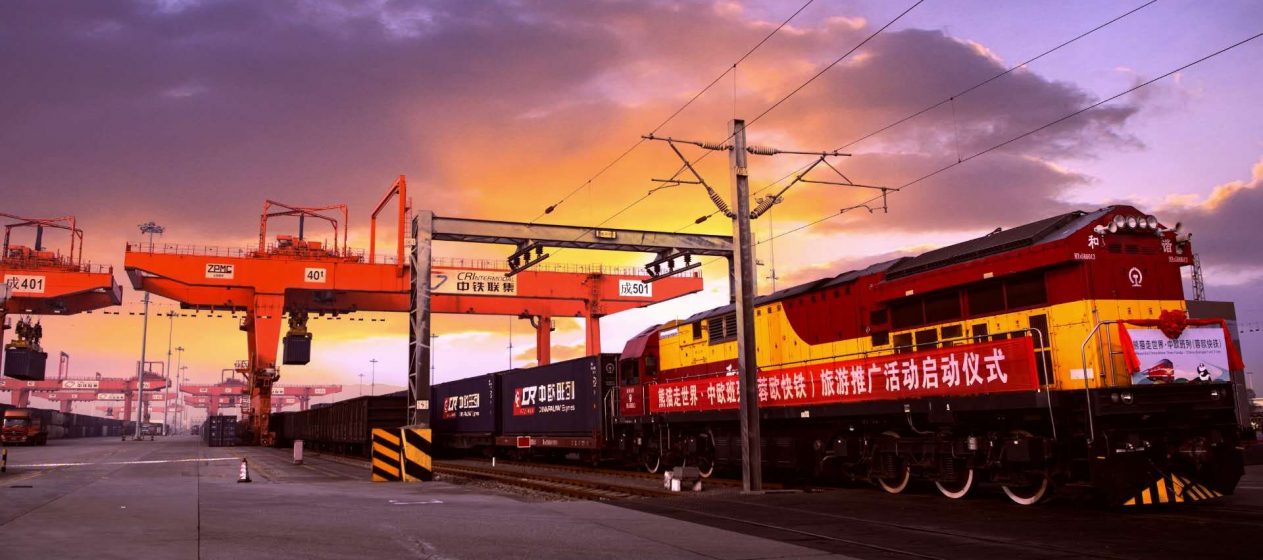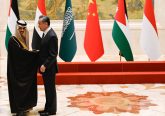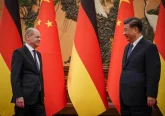In 2013, Xi Jinping announced the idea of building a ‘Silk Road Economic Belt’ across Eurasia. A few months later, he proposed a ‘21st Century Maritime Silk Road.’ Five years on, these two projects have been merged in what is arguably the most ambitious economic and diplomatic enterprise of the 21st century: the Belt and Road Initiative (BRI), or One Belt One Road (OBOR). BRI involves over 80 countries across three continents and along six economic “corridors”, plus an additional route to the Arctic. It encompasses 900 infrastructure and development projects with a combined cost of US$900 billion. The Belt and Road Initiative includes projects such as the China-Pakistan Economic Corridor (CPEC), the trans-Eurasian railways network, Ethiopia’s Eastern Industrial Zone and the construction of ports in Pakistan, Sri Lanka, Djibouti, and Algeria.[1]
The United States and regional powers in Asia and Europe are concerned about China’s strategy and the suspicious about the motivation behind this gigantic endeavour. China is seen as rejecting liberalism and embracing neo-mercantilism. Under neo-mercantilism, the state promotes its national companies abroad, ensures a net capital inflow and exerts control over the economy. Chinese practices seem to follow this strategy: over 80% of BRI projects are contracted to Chinese companies, often state-owned enterprises, and Beijing controls most of the funding for these projects: the Asian Infrastructure and Investment Bank (AIIB), and China’s own Silk Road Fund and the Export-Import Bank. It can also exert heavy influence on the Beijing-based Silk Road Dispute Settlement Tribunal.
China’s neo-mercantilist strategy looks aggressive and revisionist: it seems to challenge the rules of the liberal world order, based on the centrality of multilateral cooperation, respect for rule of law and transparency, the nexus between economic and political liberalization, and local ownership of development projects. Instead of supporting local employment, China often sends workers abroad to complete development projects. The AIIB and the Silk Road Fund have loose requirements in terms of transparency and political guarantees to issue loans. This makes their loans attractive to developing countries in need of cash but unwilling to enforce the stringent political and economic standards set by the World Bank, the IMF, and the European Union.
Uncertainty and fear about China’s true intentions with the BRI have provoked counter-initiatives by other countries. Washington has expressed its scepticism, refusing to take part in any BRI-related project or institution. Japan presented the “Expanded Partnership for Quality Infrastructure” (2015), and together with India launched the “Asia-Africa Growth Corridor” (2017). Joined by the United States and Australia, these countries now discuss harmonising their efforts within the so-called “Quad,” initially a security dialogue format. Lastly, the EU has recently put forward its “Sustainable Connectivity Strategy,” aimed at promoting higher political, regulatory and environmental standards in the very same area where BRI operates.[2]
The Belt and Road Initiative worries many supporters of the existing order, but are such concerns justified? Is China’s project really incompatible with the liberal order? China’s alleged revisionism is a matter of debate. The assumption is that Beijing’s ultimate goal is to dismantle the existing architecture of world politics, globalising the assertive stance that it has recently displayed in its neighbourhood.[3] In other words, is the BRI the economic equivalent of China’s construction of militarised islands in the South China Sea? While China has obvious strategic incentives to alter the status quo in its maritime vicinity, which it regards it as part of its national territory (whether this is justified or should be accepted is another matter), it has no strong motivations to challenge the existing order.
China thrives in the liberal capitalist order: it has enjoyed a massive, unprecedented economic expansion, as it gradually opened up and accepted the free market and its institutions, chief among them the World Trade Organisation (WTO).[4] China’s prosperity depends in large part on the continuation of the existing order, which allows it to trade and invest. And, China has acted to sustain the existing financial order in the past: Beijing assumed a key role in cushioning against both the Asian Financial Crisis of the late 1990s and the global financial crisis of 2008.[5] The West often complains about China not doing enough for the international community: yet, they usually forget how Beijing helped avoid a financial meltdown.
A more careful reading of the Belt and Road Initiative suggests that its premise is, in fact, compatible with the liberal order. At its heart, the BRI is a market-based development initiative: BRI uses the market to build markets and the necessary infrastructure to sustain them. This is consistent with the post-WWII, US-led order: to guarantee prosperity through the promotion of free markets. Moreover, the values promoted in BRI – openness, joint development and consultation, and win-win cooperation – are not different from the established goals of international cooperation.[6]
There are at least two ways in which the Belt and Road platform can strengthen the existing order. First, BRI reaches the parts of the world that the Western financial infrastructure has been the least able to penetrate, such as China’s own Western regions, South and Central Asia, or Sub-Saharan Africa.[7] Second, by investing in underdeveloped and politically volatile regions, China will increase its stakes in the preservation of peace and prosperity. For instance, in order to protect the soon-to-be-built infrastructure in Northern Pakistan, Beijing will need to establish a mechanism for security governance in conjunction with the Pakistani government.[8] BRI epitomises the nexus between economic and security governance, both of which require a greater Chinese involvement.
Will China use the Belt and Road Initiative to overturn the international rules-based order? The answer is not that straightforward. Certain aspects of BRI seem to pose a direct challenge to the existing infrastructure of development. China’s unilateral behaviour has raised legitimate concerns. However, BRI is not fundamentally opposed to the liberal order: there is at least the potential for it to become an additional piece in the jigsaw puzzle that is global governance.
This
new interpretation calls for a different Western approach to China’s Belt and
Road Initiative. Rather than simply rejecting the initiative, Western states
should seek to proactively cooperate with China and its partner states. By
participating in BRI projects, Western countries could influence the financing
process to include of higher lending standards, counter instances of Chinese
unilateralism, and ensure minimum levels of local ownership. Cooperation could calm
fears about the BRI, lock in China as a responsible actor and link the economic
and security governance elements of BRI to the existing structure of global
governance. In short, greater engagement between the East and West could turn the
largest diplomatic and development enterprise of the 21st century from
a perceived threat to the rules-based order into a new asset.
[1] Figures and data are retrieved from “Mapping the Belt and Road Initiative”, Mercator Institute for China Studies (MERICS), last accessed February 23, 2019. https://www.merics.org/en/bri-tracker/mapping-the-belt-and-road-initiative
[2] Jonathan E. Hillman, “China’s Belt and Road Initiative: Five Years Later,” Center for Strategic and International Studies (CSIS), https://www.csis.org/analysis/chinas-belt-and-road-initiative-five-years-later-0
[3] Bruno Macaes, Belt and Road: A Chinese World Order (London : Hurst & Company, 2018).
Alessandro Arduino and Xue Gong (Eds.), Securing the Belt and Road Initiative: Risk Assessment, Private Security and Special Insurances along the New Wave of Chinese FDI (Singapore 2016). “Belt & Road: Opportunity & Risk. The prospects and perils of building China’s New Silk Road” (Baker McKenzie, 2017), https://www.bakermckenzie.com/media/files/insight/publications/2017/10/belt-road/baker_mckenzie_belt_road_report_2017.pdf?la=en. Christine Lagarde, ‘Belt and Road Initiative: Strategies to Deliver in the Next Phase” (IMF-PBC Conference — Beijing, 2017).
[4] Marcus Betley Jones, “Beyond Infrastructure: Trade Facilitation Priorities for the Belt And Road Initiative,” (received Sept. 17, 2009, The World Bank, Accessed 23 Feb. 2)019.
[5] Peter Nolan, China in the Asian Financial Crisis, (Nov. 2008).
[6] The State Council of the People’s Republic of China, “The Belt and Road Initiative” (2018). http://english.gov.cn/beltAndRoad/. “Chinese mercenaries are tightening security on the Belt and Road,” MERICS (2018), https://www.merics.org/en/blog/chinese-mercenaries-are-tightening-security-belt-and-road.
[7] “How Europe Can Use the AIIB to Influence China,” MERICS, https://www.merics.org/en/blog/how-europe-can-use-aiib-influence-china. Thomas P. Cavanna, “What Does China’s Belt and Road Initiative Mean for US Grand Strategy?”https://thediplomat.com/2018/06/what-does-chinas-belt-and-road-initiative-mean-for-us-grand-strategy/.
[8] Andrew Small (2017), “First Movement: Pakistan and the Belt and Road Initiative,” Asia Policy, Vol.24(1), pp.80-87. “The BRI in Pakistan: China’s Flagship Economic Corridor,” MERICS (2017), https://www.merics.org/en/bri-tracker/the-bri-in-pakistan.







